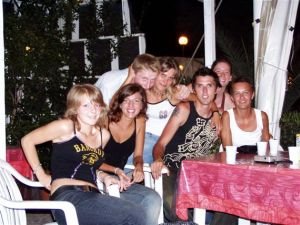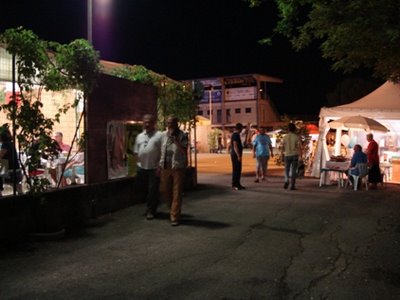Getting the most for your time at the Tuscan Museums:Why be bothered waiting in long hot lines, when you can reserve a spot in advance at one of the more famous museums in all of Tuscany. Do it yourself, with contained reservation fees - read about this and other museums right here.
Or why bother waiting in any lines when you aren't sure if this is the right museum. There are so many truely interesting places in the many towns of Tuscany - check out the places you might be interested in before you get to the ticket booth.

Organize before you arrive and save yourself the long hot and uncomfortable wait outside of the Uffizi to Botticelli or outside of the Academia to see the ever famous Davide by Micheangelo. One of my favorite museums which has just opend up again after a few years of restorations is the
Palazzo Davanzanti you can view a medieval home with various tools and furnishings which would have been present at this time. Another off the beaten track - but very easy to get to is
Bargello. This Museum is famous not only for the wealth of material inside but also for the incredible building that houses it (its also very close to one of my favorite restaurants Yellow Bar)

Information and Booking
Contact Firenze Musei, Tel: +39 055294883
Booking charge : � 3,00 per person. plus the cost of the ticket into the museum
Call - they speak English! They will reserve the date and time with you and you pay when you come to pick up the tickets at the museum.
CLICK HERE for more details from the official site in English on the several museums which are open to the public, including the cost, the times they are open and the days they are open.
Got kids who might not sit through a museum tour -- but you are looking for something other ice cream for them to remember Florence by Palazzo Vecchio in the city center has a few interesting options, including a tour of a secret passage way and guided tours of the cieling in the older rooms (walk among the rafters to see how the cieling was built!) Check out the site below, it is in English and you can phone or email them for more info (in English!) for children of all ages --- including big ones (like those over 35 year old :))
CLICK HERE FOR KIDS MUSEUM INFOMost people know they want to see Siena - they have heard lots of great stories about Siena but what is it really all about?
- Keep in mind that Siena can get PACKED - and in the summertime it can get HOT - so what does this mean to you?
Head over there
early and enjoy the cool mornings and uncrowded bars and cafes or
hang out there in the afternoon (in the summer after 5pm) when you can start to enjoy the locals come to life. Early spring, late fall and the winter are great times to visit without lots of pushing, crowds and hot, long lines (even for the bathrooms!)
Of all the Museums the one which is probably most visited is the Duomo or cathedral is a beautiful building, a mix of Gothic and Romanesque architecture with dark green and white marble in the facade. One of its main attractions is the
marble-inlaid floor, to which many artists contributed. There is a line to get and a ticket - so check out the time schedule before roaing around (because there is no shade while you wait!!)

However the Museo Civico in the main square of Siena including the Torre di Mangia (a very tight trip to the top of the tower...if you are ambitious and explorative GO FOR IT!) is a close runner up. For a virtual tour of the Museum itself
check out this link.There is also a
secret place that most don't know about in Siena is the underground water system and you can pick up more info and
request a private tour at this link.

According to the late fourteenth-century papers of Siena, in 1176 the friars of the Carmine Monastery dug and found a vein of water of some importance, a discovery that for a long time legitimated later searches and prolonged the story of the underground river. The Sienese squandered time and money for centuries in the search of this legendary underground river, to which they gave the name "Diana," even though no historical records ever proved its existence.
This
link of Siena will give you an extensive view of the museums and their official sites in Siena as well as a lot of fun info on Siena itself. You can even
book ahead for the Museo Civico, I know the page is in Italian so I will give you a quick overview - you can send a fax (+39 0577 226265 o +39 0577 46829) indicating the date you would like to visit the number of persons (and their ages so they can tell you if there are any special rates).
Include an email address and / or fax number so the office can confirm. You will have to pay for the tickets in advance (probably by a money transfer or cashiers check in Euros at least four days before your appointment.) The good things is they give you a discount for doing everything in advance!



























